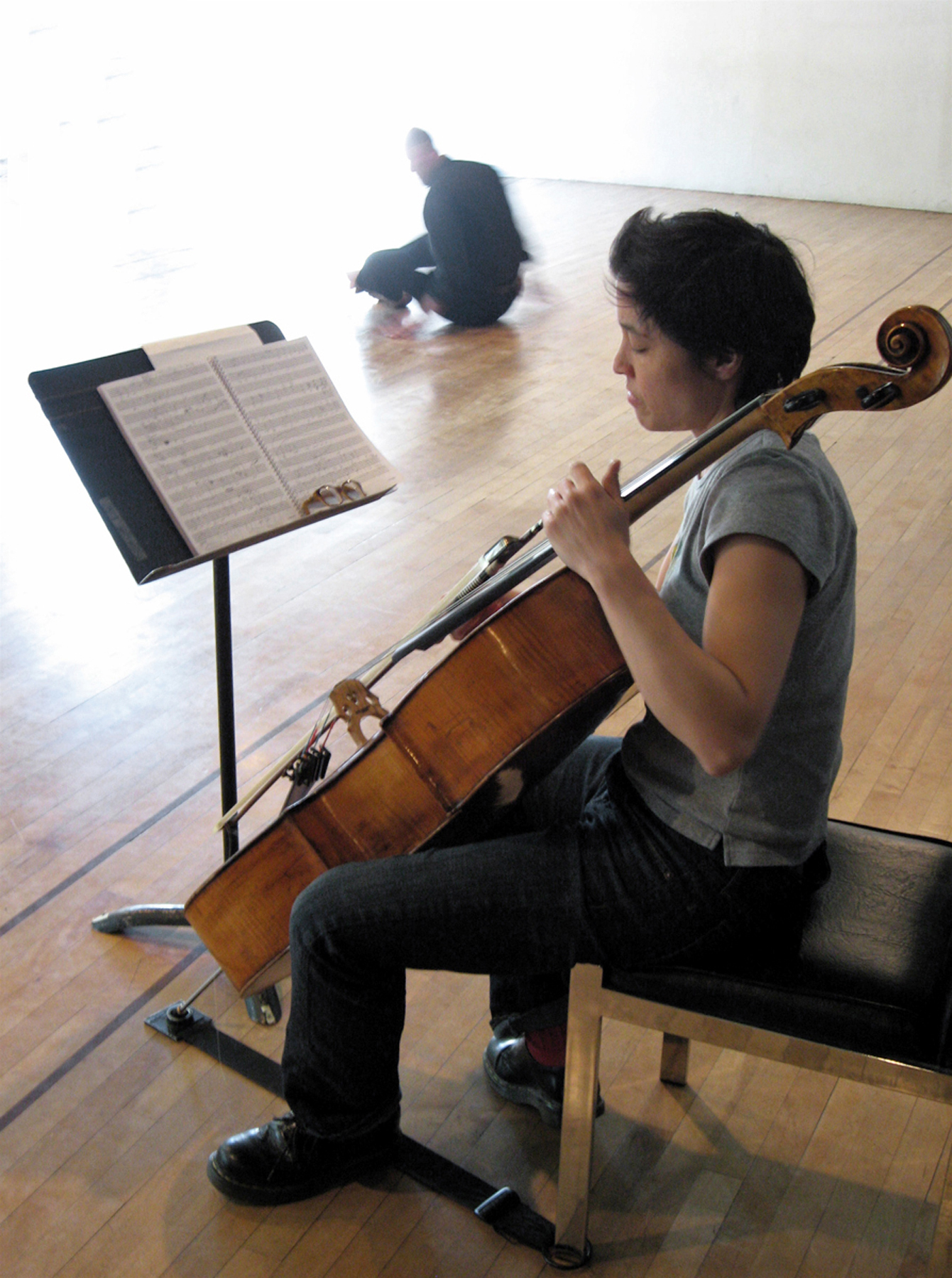Quell: a mixed bag of tired old tricks and new revelations.

Quell (part of this year's Dancing on the Edge Festival) is an interesting, if half baked, piece of modern dance that starts strong and ends poorly. Two dancers, Lin Snelling and Peter Bingham, share the stage to varying degrees of success. They're accompanied by Peggy Lee on cello playing the kind of music that could only be defined as experimental or avant-garde. Lee's cello alternates between beautiful and grating but she is always technically masterful. You've really got to know your instrument to fuck with it the way Lee does and as a result she's the first highlight of Quell. The whole production is supported by the second highlight, James Proudfoot's ridiculously simple yet ridiculously effective lighting.
I had never seen a performance at the EDAM Studio Theatre before. So right off the hop I was enticed by what was going to happen. The space is a large room which houses an impressive lighting grid and a row of large windows against the western wall. The limited seating in the room is made comical by how big the space is. As 30 or so people gathered into the studio I was intrigued by the possibility of what was going to happen. I hadn't seen a dance show in years.
The performance begins with Lee playing 'music' while Snelling dances in a style that fused 60's mod with choreography that was eerily reminiscent of the dancing in Beyonce's "Single Ladies (Put A Ring On It)" video. Eerily because the juxtaposition is at once alienating and purposeless. But that doesn't mean it's bad. It also doesn't mean it's good. I suppose, as with most things in the modern dance world, it is what it is.
Snelling's performance consists of her walking and dancing up and down a track of light that runs vertically up the stage. She periodically recites a spoken word poem that uses a boating metaphor to describe her relationship with what is presumably an ex-lover but could be a friend, maybe a relative. It would appear vagueness is the name of the game. Either way, Snelling struggles to tell her story while at odds with the cello which cuts off her speech and supports her movement all at once. This was a fascinating struggle to watch as it culminates in Snelling up against the rear wall, immersed in a giant square of white light, challenging her own shadow.
Bingham's piece doesn't fare as well. He begins his dance as far too many modern dance pieces have begun before him - namely by lying on the floor and rolling around for 5 minutes before he finally gets up. This type of cliched choreography is what keeps many people, including myself, distanced from the dance world. Once he's on his feet, Bingham begins a masterful routine involving finger and hand puppetry which was captivating in it's simplicity. But from here things go south as a generic modern dance routine develops that consists mainly of flailing about the room and trying to 'feel' the music. I do this in my living room a lot. I would never think to get people to pay and see it. Thankfully Lee keeps things interesting with her musical impressions, passages, motifs, and whatever else could be used to describe the hour of non-music she plays.
When all was said and done I found myself impressed with the clever lighting techniques, especially the shadow work which both performers do expertly, and the reflective use of the windows. However, apart from Lee's whacked out cello and the dancers' fleeting moments of brilliance, little else resonates from Quell.



